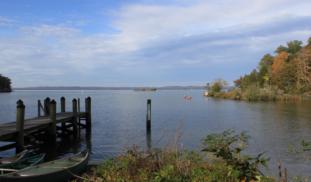Please wait...
About This Project
We propose a new paradigm in how the hydrosphere is taught by using a novel immersive telepresence system tailored for students and citizen scientists. This system enables remote monitoring and control of equipment between an inland waterway and a coastal region. We believe that science education will change to embrace immersive learning and foster continued student engagement. We will prove this system in collaboration with Toledo Public Schools, OH, to measure the overall effectiveness.
More Lab Notes From This Project

Browse Other Projects on Experiment
Related Projects
Can immersive telepresence systems more effectively educate inland and coastal communities about the hydrosphere?
We propose a new paradigm in how the hydrosphere is taught by using a novel immersive telepresence system...
How have warming waters influenced reef species around Poor Knights Islands, New Zealand?
The Poor Knights Islands, New Zealand reef communities have been exposed to warmer than average temperatures...
Environmental Justice in North Charleston Communities
The seven neighborhoods associated with the Lowcountry Alliance for Model Communities in N. Charleston were...


